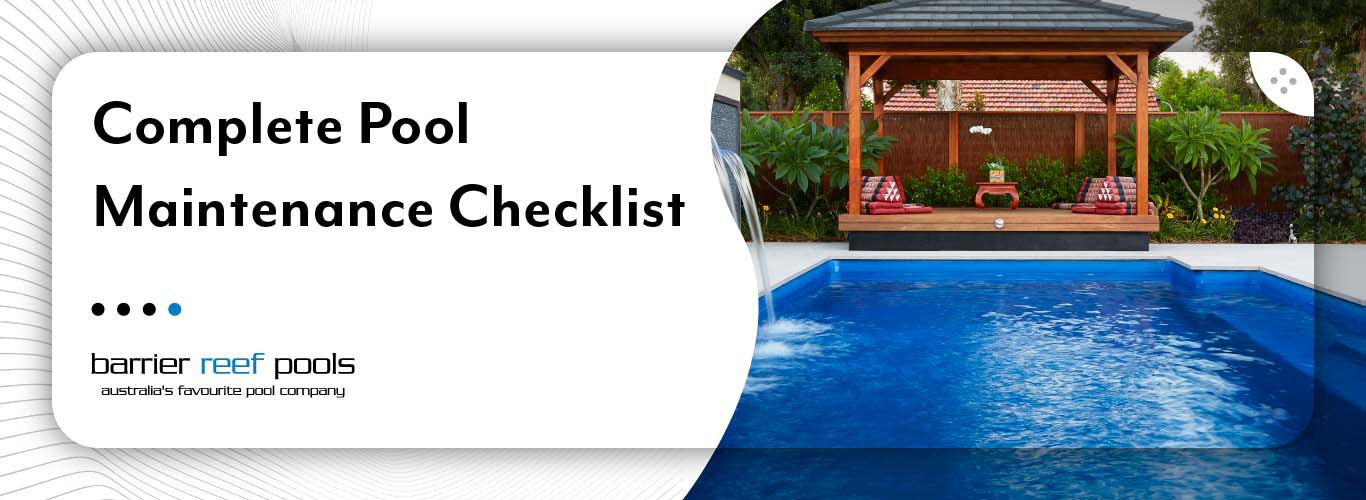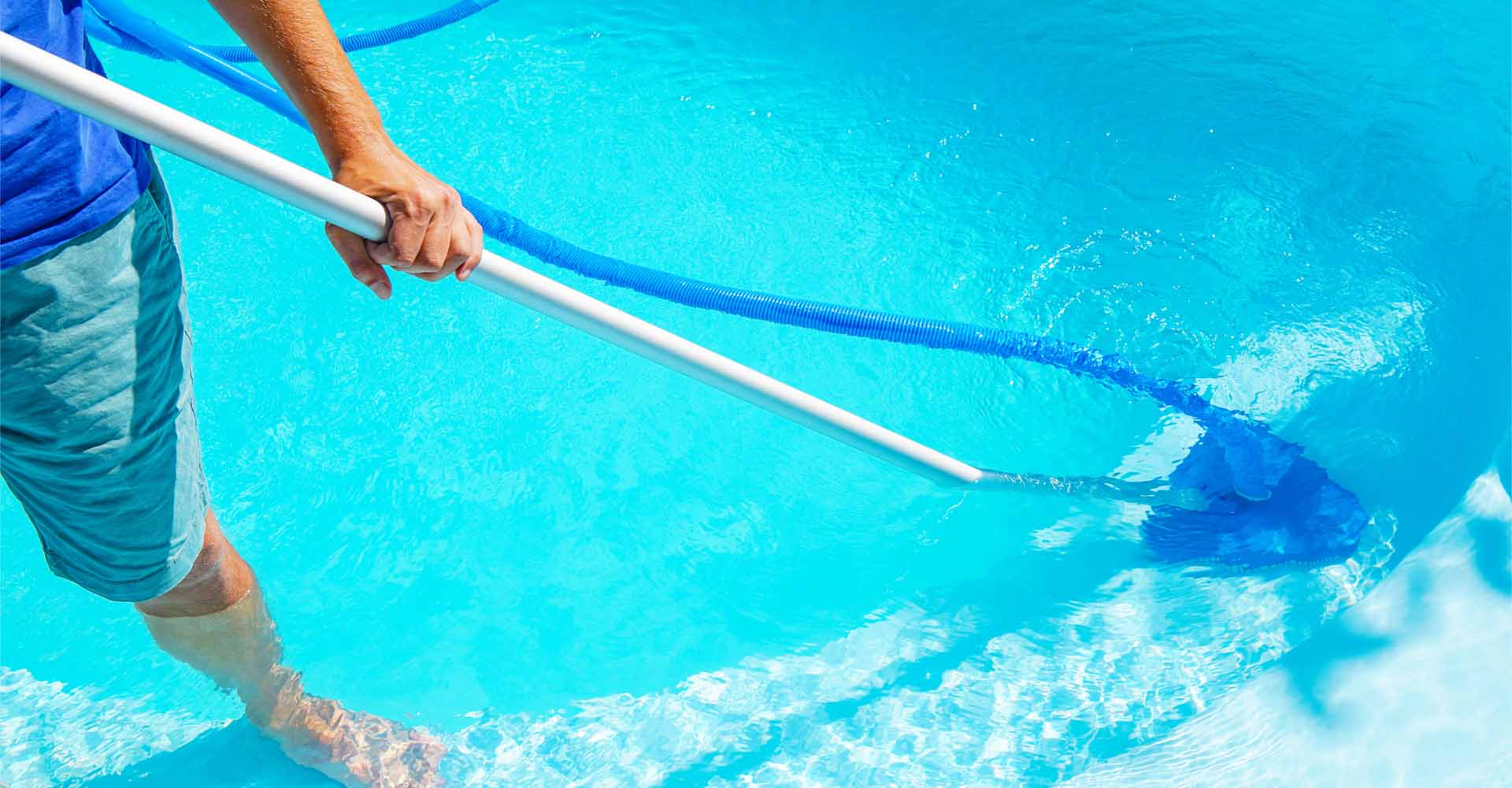Barrier Reef Pools > Blog > Pool Maintenance > Complete Pool Maintenance Checklist
Owning a swimming pool comes with a whole set of responsibilities. Thorough pool care is essential to ensure it remains in a functional stage at all times and for a long period. Leaving the pool unattended for a considerable period can degrade its surface and can cause heavy expenditure. To prevent unnecessary expenses and maintain the quality of the pool, regular maintenance is important. Here is a complete pool maintenance checklist to help you out.

First and foremost, you would want to be well-equipped with everything you might need to take care of your swimming pool. While there are a variety of supplies available in the market that will help you in achieving this task, the most important supplies are:
Telescopic Pole: This pole will enable you to clean your pool from the poolside provided you attach the necessary heads as per your requirement. While purchasing a telescopic pole, ensure that its attachment head is universal.
Leaf Net Or Skimmer: A leaf net or skimmer is a must-have product for every pool owner. It is usually available in two forms- either as an attachment head to the pole or as an automatic skimmer system. Choose the one that best suits your swimming pool.
Pool Brushes: Pool maintenance involves the use of chemicals such as chlorine. To avoid excessive use of chemicals, you can use pool brushes. It helps in the regular cleanliness of the pool.
Hose And Vacuum Cleaner: A swimming pool hose and a vacuum cleaner is another essential piece of equipment you must have. Using it, you can remove the excess debris from the pool, maintain its pH levels and overall cleanliness.
Chemicals: The most important chemical when it comes to pool maintenance is chlorine. However, if the pool water has turned green, you would require other chemicals as well.
Once you have collected all the required supplies, you can begin cleaning your pool.
Using your telescopic pole and the leaf skimmer or net, collect and empty all the leaves, twigs, and debris that might have fallen into the pool. This step is important to ensure your swimming pool remains clean and tidy. If these leaves, twigs, and debris remain unattended for long, it might block your pump and filters. It can also lead to the growth of algae.
The water level in a swimming pool should neither be too high nor too low. If the water level turns out to be too high, then the skimmers would not be able to function properly. On the other hand, if the water level is below the optimum level, the skimmers will begin sucking air. To ensure it is at the right level, you must check it daily. You can then either add more water or remove the excess.

Checking the pump is important to know whether the flow of water to the pump is normal or not. Both low and high pressure is undesirable. While low pressure shows that something is wrong before the impeller, high pressure indicates that something is wrong after the impeller. To ensure that the water is flowing correctly, you must run the pump for some time every day. This will help you check if the filters are properly cleaned and are in good condition.
Filters are essential to keep the pool clean. They remove the dirt and debris from pool water. If the filter is not maintained in a proper condition, your swimming pool might become untidy very soon. That is why it is recommended to check the pool filter every week and remove any particles or debris that might have gathered inside. Mostly, three kinds of filters (sand, cartridge, diatomaceous earth filter) are used, and all of them must be cleaned differently. Therefore, check the correct method with the manufacturer depending on the filter you own. You can also backwash the pool filter if required.
Through a pool brush, you can clean the sides and the floor of your swimming pool. This prevents the build-up of algae and calcium deposits inside the pool. Ideally, you should point the brush towards the main drain so that the deposits can be vacuumed easily. Another thing to keep in mind is that you must pick an appropriate brush as per the design and the material used to construct the pool.
Once the pool is brushed, you can vacuum it to avoid staining of pool water and the growth of algae and bacteria. Constant vacuuming will also reduce the need to use many chemicals. You can either vacuum the pool manually or use an automatic vacuum cleaner.

Depending on the frequency of use of the swimming pool, you must test the pool water either daily or weekly. Testing the pool water involves checking the pH levels, salt levels, sanitiser levels, and alkalinity of water. This will help you understand what chemicals need to be added and how much. Generally, pool owners add chemicals to the pool daily as they act as disinfectants and sanitise the pool water. This again helps in controlling the growth of unwanted algae and bacteria in the pool. You can also get a shock treatment done to purify the pool by getting rid of germs, algae, bacteria, and other matter that might have accumulated in the pool.
Apart from doing all the above things, you must regularly check that all your swimming pool accessories and equipment (ladders, handrails, diving boards, etc.) are working effectively. With time, the bolts on your ladders, diving boards, and slides might get lost. Make sure to get this checked from time to time. This is necessary to ensure the safety of all family members and guests.
This checklist will help you in maintaining your swimming pool in the best condition so that you and your loved ones can have the best time of their lives!